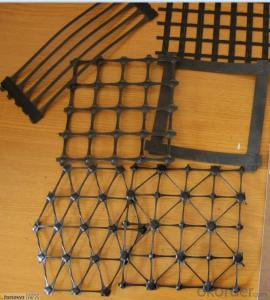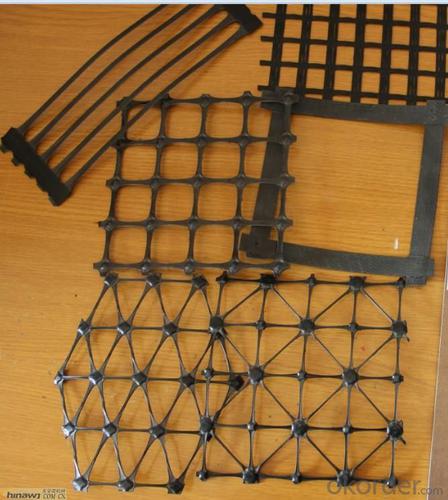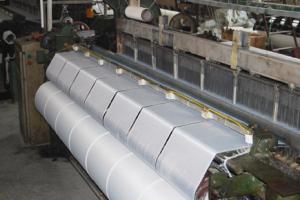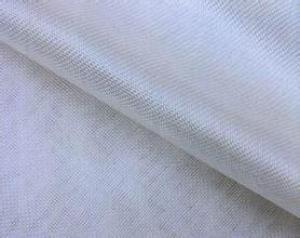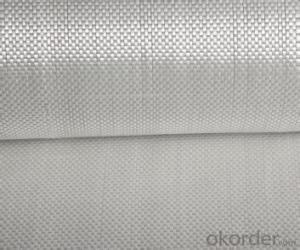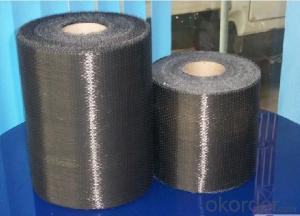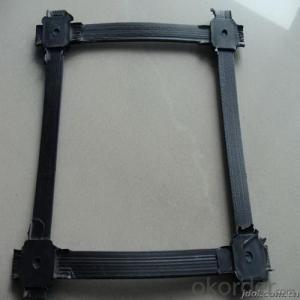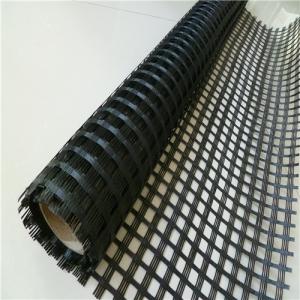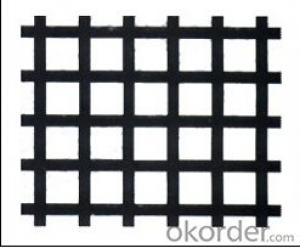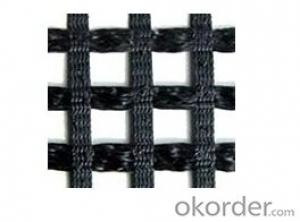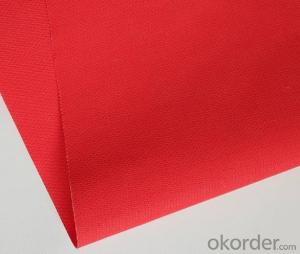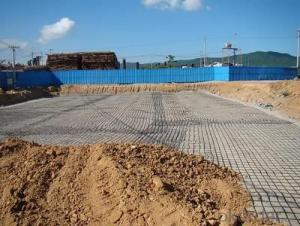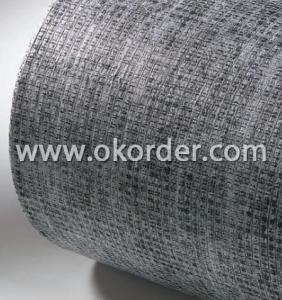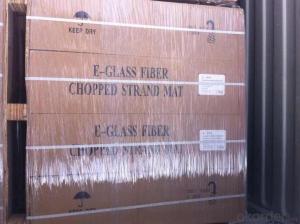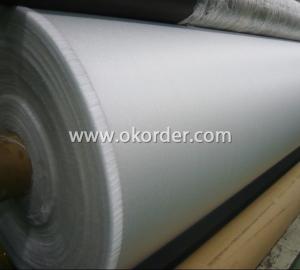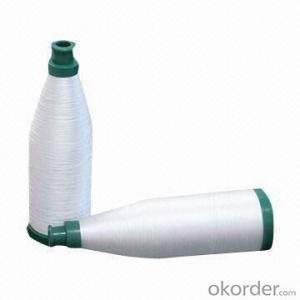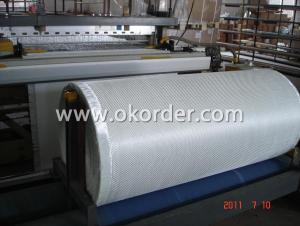Acrylic Coated Fiberglass Fabric - High Quality Warp Knitting Fiberglass Geogrid
- Loading Port:
- Qingdao
- Payment Terms:
- TT OR LC
- Min Order Qty:
- 1000 m²
- Supply Capability:
- 1000000 m²/month
OKorder Service Pledge
OKorder Financial Service
You Might Also Like
1.Brief Introduction
Warp Knitting fiberglass geogrid
The Warp Knitting Fiberglass geogrid selects the excel in synthetic fiber as a raw material,uses the warp knitting oriented structure,latitude and longitude in the fabric to the yarn between not curving condition.
2.Characteristics
Each kind of higher Uygur path,railroad’s soft roadbed enhancement isolation different base earth material.
2. The river bank,the slope of embankment strengthen stably.
3. Each kind of ground strengthens stably.
4. Strengthens the bridge connection surface.
Product Features
1. Geogrid width ranging from 1000mm to 6000mm
2. High intensity, high module, low slow change ,anti-aging , anti-embrittlement, tensile strength to be high strength.
3.Application
Product No. | Stretching ratio(%) | Grid(mm) | Width(mm) | ||
Vertical | Horizontal | ||||
PET20-20 | 13 | 20 | 20 | 12.7x12.7 25.4x25.4 | ±5 |
PET30-30 | 13 | 30 | 30 | 12.7x12.7 25.4x25.4 | ±5 |
PET40-40 | 13 | 40 | 40 | 12.7x12.7 25.4x25.4 | ±5 |
PET50-50 | 13 | 50 | 50 | 12.7x12.7 25.4x25.4 | ±5 |
PET80-80 | 13 | 80 | 80 | 12.7x12.7 25.4x25.4 | ±5 |
PET100-100 | 13 | 100 | 100 | 12.7x12.7 25.4x25.4 | ±5 |
PET120-120 | 13 | 120 | 120 | 12.7x12.7 25.4x25.4 | ±5 |
5.FAQ
Note: The Warp Knitting Polyestergeogrid are available with a width range of 1000mm~6000mm.Other specifications are also available on customer request.
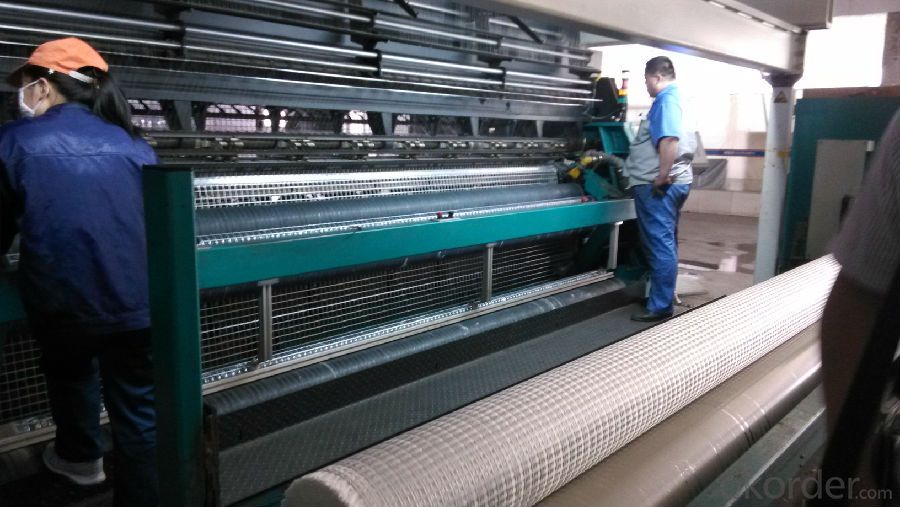
- Q: Can fiberglass fabrics be used for insulation in pipelines?
- Yes, fiberglass fabrics can be used for insulation in pipelines. They are commonly used due to their excellent thermal insulation properties, high temperature resistance, and durability.
- Q: Are fiberglass fabrics resistant to staining or discoloration?
- Fiberglass fabrics, in general, exhibit resistance against staining or discoloration. Such resistance stems from the fact that fiberglass, being a synthetic material, is non-porous and incapable of absorbing liquids or substances that could result in stains. Furthermore, manufacturers often apply specialized coatings or finishes to fiberglass fabrics, which serve to offer an additional shield against staining or discoloration. However, it should be emphasized that the extent of this resistance may vary depending on the specific type of fiberglass fabric and the substances it encounters.
- Q: What are the different weights of fiberglass fabric?
- The different weights of fiberglass fabric typically range from 3 to 40 ounces per square yard.
- Q: What are the different types of fiberglass fabrics available?
- There are several different types of fiberglass fabrics available, each with its own unique characteristics and uses. These include: 1. Woven fiberglass fabric: This is the most common type of fiberglass fabric, consisting of tightly woven strands of fiberglass. It is lightweight, flexible, and has good strength and fire resistance. Woven fiberglass fabric is commonly used in applications such as boat building, aerospace components, and insulation. 2. Non-woven fiberglass fabric: This type of fabric is made by bonding randomly oriented fiberglass fibers together. It is often used as a reinforcement material in composite structures, such as in the construction of wind turbine blades, automotive parts, and sports equipment. 3. Knitted fiberglass fabric: Knitted fiberglass fabric is made by interlocking loops of fiberglass yarns, creating a flexible and stretchable material. It is commonly used in applications where flexibility and conformability are required, such as in the manufacturing of thermal insulation blankets and protective clothing. 4. Chopped strand mat: Chopped strand mat is made by randomly aligning short strands of fiberglass and bonding them together with a binder. It is typically used as a reinforcement material in hand lay-up and spray-up processes for producing fiberglass molds, boat hulls, and automotive body panels. 5. Roving fabric: Roving fabric is made by arranging continuous strands of fiberglass parallel to each other and bonding them together. It is commonly used as a reinforcement material in filament winding and pultrusion processes for manufacturing pipes, tanks, and structural profiles. In addition to these types, there are also variations of fiberglass fabrics available, such as those with specialty coatings or treatments to enhance properties like water resistance or electrical conductivity. The specific type of fiberglass fabric used will depend on the desired application and performance requirements.
- Q: How does fiberglass fabric perform in terms of moisture absorption?
- Fiberglass fabric is known for its excellent resistance to moisture absorption. Due to its non-porous and hydrophobic nature, fiberglass fabric does not readily absorb water or moisture. This property makes it highly suitable for applications where exposure to moisture or humidity is a concern. Additionally, the low moisture absorption of fiberglass fabric helps to maintain its structural integrity and dimensional stability, even in environments with high levels of moisture. Overall, fiberglass fabric performs exceptionally well in terms of moisture absorption, making it a reliable choice for various industries and applications.
- Q: Can fiberglass fabric be used for making insulation blankets?
- Yes, fiberglass fabric can be used for making insulation blankets. It is a common material choice due to its excellent thermal insulation properties and resistance to high temperatures.
- Q: How do fiberglass fabrics perform in terms of dimensional stability?
- Fiberglass fabrics are known for their excellent dimensional stability. This characteristic refers to the fabric's ability to maintain its shape and size under various conditions, such as temperature changes, moisture exposure, and mechanical stress. Due to the inherent properties of fiberglass, such as its high tensile strength and low coefficient of thermal expansion, fiberglass fabrics are highly resistant to dimensional changes. They do not shrink, stretch, or deform easily, even when subjected to extreme temperatures or moisture. This stability is crucial in applications where precise dimensions and consistent shape retention are required, such as in the manufacturing of aircraft parts, automotive components, and structural reinforcements. Additionally, fiberglass fabrics exhibit minimal creep, which is the tendency of a material to slowly deform or elongate under a constant load over time. This resistance to creep ensures that fiberglass fabrics maintain their original dimensions and shape over long periods, making them ideal for applications that require long-term stability, such as in building construction or industrial machinery. In conclusion, fiberglass fabrics perform exceptionally well in terms of dimensional stability. Their resistance to shrinkage, stretching, deformation, and creep make them highly reliable and suitable for a wide range of applications where maintaining precise dimensions and shape is crucial.
- Q: How is fiberglass fabric used in the production of wind turbine blades?
- Due to its exceptional properties and advantages, fiberglass fabric finds extensive use in the manufacture of wind turbine blades. Typically woven from lightweight and durable fiberglass filaments, the fabric serves as the primary structural material for these blades. To form a strong and rigid composite material known as fiberglass-reinforced polymer (FRP), the fabric is layered and impregnated with a resin, such as epoxy. This FRP composite enables the blades to withstand the forces and stresses experienced during operation in the wind. Incorporating fiberglass fabric into wind turbine blades involves several steps. Firstly, a mold is created in the shape of the blade using a positive model. Then, layers of fiberglass fabric are meticulously placed onto the mold, with each layer oriented in a specific direction to optimize the mechanical properties of the blade. The fabric layers are thoroughly impregnated with resin, ensuring a solid bond throughout the structure. This process may be repeated multiple times to increase the blade's thickness and strength. The advantages of using fiberglass fabric in wind turbine blades are plentiful. Firstly, its lightweight nature allows for the construction of longer and larger blades, enhancing energy capture efficiency from the wind. Additionally, the fabric is highly resistant to corrosion, making it ideal for outdoor applications where the blades face harsh environmental conditions. Moreover, the inherent flexibility of fiberglass fabric enables the blades to bend and twist in response to changing wind conditions, reducing unnecessary stress and improving overall performance. The fabric also exhibits resistance to fatigue, ensuring its structural integrity even under repeated loading cycles. In conclusion, fiberglass fabric plays a vital role in the production of wind turbine blades, providing the necessary strength, durability, and flexibility for efficient and reliable energy generation. Its lightweight nature, corrosion resistance, and fatigue resistance make it an ideal material choice for constructing blades capable of withstanding the demanding operating conditions of wind turbines.
- Q: How do fiberglass fabrics compare to other types of fabric in terms of strength and durability?
- Fiberglass fabrics are highly regarded for their remarkable strength and durability, making them a favored option in multiple industries. In comparison to alternative fabric types, fiberglass stands out due to its unique attributes. To begin with, fiberglass fabrics possess outstanding tensile strength, which refers to their ability to resist stretching or breaking under tension. This strength surpasses that of most natural or synthetic fabrics by a significant margin. As a result, fiberglass fabrics are highly resistant to tearing and can withstand heavy loads without compromising their integrity. This renders them ideal for applications that require strength and durability, such as in the construction, automotive, and aerospace sectors. Moreover, fiberglass fabrics exhibit exceptional resistance to abrasion, chemicals, and extreme temperatures. These fabrics have a low coefficient of thermal expansion, meaning they do not expand or contract significantly when exposed to temperature fluctuations. This characteristic allows fiberglass fabrics to maintain their structural integrity even in extreme environments, including high heat and cold. Additionally, fiberglass fabrics are highly resistant to chemical corrosion, making them suitable for use in corrosive or acidic environments. Furthermore, fiberglass fabrics offer exceptional dimensional stability. Unlike certain other fabrics that may shrink or stretch over time, fiberglass fabrics retain their shape and size even under prolonged stress or exposure to moisture. This characteristic ensures the longevity and reliability of fiberglass fabric products. Overall, fiberglass fabrics demonstrate superior strength and durability when compared to other fabric types. Their high tensile strength, resistance to abrasion, chemicals, and extreme temperatures, as well as excellent dimensional stability, make them a dependable choice for various applications where strength and longevity are crucial.
- Q: What are the different weight options for fiberglass fabric?
- The weight options for fiberglass fabric can vary depending on the specific application and manufacturer. However, common weight options for fiberglass fabric range from lightweight options such as 3 ounces per square yard (oz/yd²) to heavy-duty options weighing around 30 oz/yd² or more.
Send your message to us
Acrylic Coated Fiberglass Fabric - High Quality Warp Knitting Fiberglass Geogrid
- Loading Port:
- Qingdao
- Payment Terms:
- TT OR LC
- Min Order Qty:
- 1000 m²
- Supply Capability:
- 1000000 m²/month
OKorder Service Pledge
OKorder Financial Service
Similar products
Hot products
Hot Searches
Related keywords
